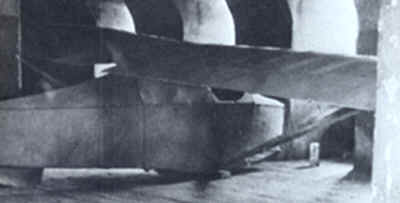Colditz achieved fame after World War Two as the prisoner of war camp that no-one could escape from. Colditz was an isolated castle built on top of a cliff and overlooking the River Mude in central Germany. To all intents it was seemingly impossible to escape from – so the Germans believed. However, this did not mean that men did not try to do so and by putting together the best escapees from POW camps, the Germans effectively made a problem for themselves.

Colditz was seen by the Germans as a ‘super-camp’ where men who could not be held by other POW camps were sent. Officially, Colditz was a Sonderlager (Special Camp) but it was also known as a Straflager (Punishment Camp).In the early days and months of the war, Colditz was used as a transit camp for Polish troops after the surrender of Poland. On November 6th, 1940, a handful of British RAF officers arrived, quickly followed by six British Army officers. By the end of the year, the numbers had increased and included French, Dutch and Belgium POW’s.
Men of all nationalities were brought to Colditz from 1941 on. It housed 600 POW’s – British, French, Belgium, Dutch and Poles. Each nationality tended to stick to themselves and there was little national intermingling. The French and British did set up language lessons between themselves and some sport was played within the confines of the castle. However, the one thing that united all of them was that they were at Colditz for a good reason, and it was this defiance of German authority, despite being prisoners, that did unite all the POW’s at the camp. The Germans had put together in one camp many experts in forgery, locksmiths, tailoring etc – all vital for the success of escaping. With such a collection of experts, it was only a matter of time before escape attempts were made.
| “We kept them in with rifles and machine guns. We searched them day and night. And yet they got out.Captain Reinhold Eggers, Colditz security officer |
Hermann Goering had visited the castle and declared it to be escape proof. He was proved to be wrong. In the time Colditz was used as a POW camp, there were many escape attempts. 120 of these men were recaptured after breaking out but by the end of the war, 31 POW’s had successfully got back home. No other POW camp in World War Two had the same rate of success.
There was little to do at Colditz and time was spent trying to escape. Probably the most famous attempt at escape was the building of a glider in an attic above the castle chapel. When the glider was built the idea was that the glider could be catapulted from the roof to the other side of the River Mulde with two men on board. The idea came from Bill Goldfinch and Anthony Rolt. Together with Jack Best and Stooge Wardle, they set about designing and building the glider. Using hundreds of pieces of wood – especially bed slats and floor boards – the men constructed the glider which they hoped would glide the 60 metres required to take two men to the other side of the Mulde. The skin of the glider was made from prison sleeping bags and the material’s pores were sealed by boiling prison issue millet and smearing it onto the material. However, their daring idea was never put to the test as the war ended before the glider had been completed.
Tunnels were also built but the thickness of the castle walls made digging tunnels very slow work. Also by 1944, the Germans had worked out many of the ways that POW’s had been using to escape and these lapses in security had been plugged.
Colditz Castle was liberated on April 16th, 1945.
Related Posts
- Colditz achieved fame after World War Two as the prisoner of war camp that no-one could escape from. Colditz was an isolated castle built on…